It would have been a Greek Island vacation lasting 12,000 years.
All up and around the cave that once held the Raverloihenna people and still clearly holds their ancestors, the whole cliff face gently curves away from the direction of the prevailing weather. There is a flat area at the cave month, on the edge of which grow three large, sheltering trees. It is a gentle tumble down to a stony beach, miles of rock pools and the clear blue of the Bass Strait.
Wake up. Down to the beach. Oysters, muscles, octopus, scallops. Cooked over fire and eaten in the sun. Repeat. And even when the weather is inclement, you can sit -warm and dry- watching great sheets of rain whip the whitecapped waves before them. Today, people pay thousands of dollars to experience this for five days but a whole civilisation managed to do it for four times the length of Dynastic Egypt’s whole history.
This is Tangdimmaa, named Rocky Cape by Matthew Flinders himself and now Rocky Cape National Park. (I will not be showing you any pictures of any of the caves because I took none, and neither should you. The entrance to the largest habitation is just to the right of frame in the large rocky hill which is Tangdimmaa herself, so you can place yourself in the scene.) As with Cradle Mountain, the landscape is essentially one big crystal, and the field effects are palpable. It is simply wonderful and quite restorative to just be here in an aware fashion.
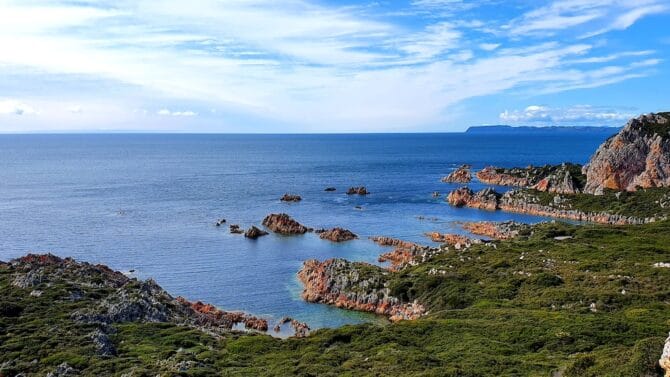
We are in town for the Permaculture Tasmania AGM. More specifically, we are using the AGM as an excuse to be out on Country we have not yet met as the weather begins to warm up down here. The AGM is, in fact, three towns along the coast but I wanted to stay in Stanley because it is the birthplace of Bill Mollison himself and that seemed the right way to ‘fold into’ the proceedings -especially as they occur during the Days of St Cyprian which is in many respects my farmversary and because it is a week away from the anniversary of Bill’s death. Stacking metaphors and events in time is very good magic.
The town of Stanley, I officially declare, is Tasmania’s Innsmouth, and I make that comparison favourably. For one thing, it is a town clinging to the sides of an ancient and somewhat melancholic being called Martula that is known in settler language as The Nut.
We are staying on his slopes, in an old inn you can see in this video from a mildly annoying millennial vlogger. (Tautology?)
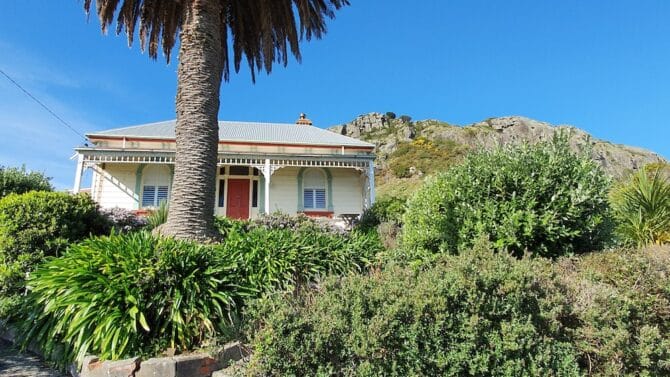
The Innsmouth vibe does not just come from the denizens’ accidental (?) embrace of a Being from the Dreamtime as their local god and protector. And it doesn’t just come from the fact that there are enormous monsters in the sea that literally pull children off boats and or otherwise attack said boats, and I’m talking in the last couple of months:
- Shark pulls 10-year-old boy from boat and attacks him off Australian coast.
- Father and son film encounter with ‘massive’ shark as it collides with boat in Tasmania’s north.
There’s also a real Masonic thing going on in Tasmania’s northwest, it turns out.
Each of these little towns seems to have deco masonic lodges and the masons had erected a sign advertising their memberships as we drove back into town this afternoon, extolling the benefits of joining. Two different places have had 33 in their business names while not being at number 33. So it’s not just a legacy impact, they appear to be a living cultural influence. (I don’t care, I’m just noticing that it makes it a very different place.)
That heady combination of deco and masonry you’re probably familiar with from your own town is on show. It’s fascinating to consider when that was ‘new’. In Bill’s time, basically. Bill Mollison was born here in 1928 and the mind boggles at what that was like. To be honest, most of the buildings probably looked the same. If you have seen The Light Between Oceans -and it’s quite good!- then you have seen Stanley.
But in Bill’s time, the buildings would have had their original function. There is an excellent business called -because of course- The Angels’ Share, on the main road. We spent the previous evening drinking and chatting with Will, one of the proprietors.
It used to be a bank and he showed us the several vaults and where the bank manager’s quarters were originally. We learned that this town is the closest point to the mainland (excluding the islands in Bass Strait) and in an era of hard currency, this is literally where Tasmania’s money came in and overnighted.
When Bill Mollison was born, it was presumably still a bank and that is somehow amazing. I watched a video of Edgar Mitchell talk about how his grandparents headed west in covered wagons, his parents were alive for the first powered flights and automobiles and he went to the moon. Bill’s story reminds me of that, somehow. He was born into a context of hard currency and whaling towns and the few people if any who still remembered Martula’s true name pretending that they didn’t so they weren’t subject to a lifetime of abuse.
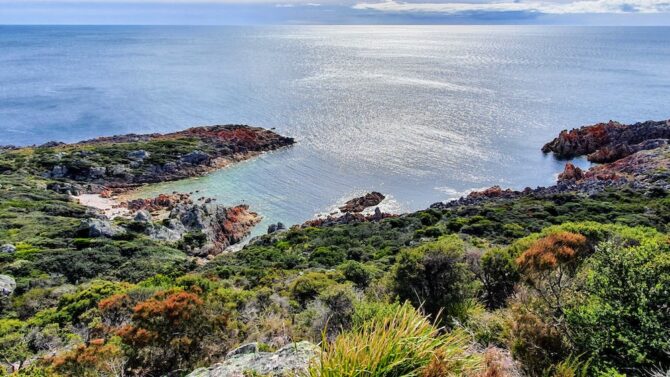
And it’s stunning. As I write this, the tide is coming gently in, the sun is setting, I’m looking out the window of a nineteenth century inn and everything looks gentle, picturesque, ‘as it should be’. The dissociation at the heart of the disaffected colonial experience -and I include my own in that- is fascinating. To be appalled at one’s distance and isolation and lack of prospects also requires you to somehow reject -at least in part- the immanent profundity of your location. But if you didn’t, you would neither leave nor seek to improve things. In the case of something like permaculture, it is a peculiar tension. I am reminded of a line from the first episode of Yellowstone, which is about the struggles of a family managing a Montana cattle ranch bigger than Rhode Island. The patriarch, John Dutton, says “if someone had all the money in the world, this is what they would buy.” That comes from a more libertarian place than most permaculturalists, but it speaks to the shortcomings in how we understand Country and value. From the Tagari website:

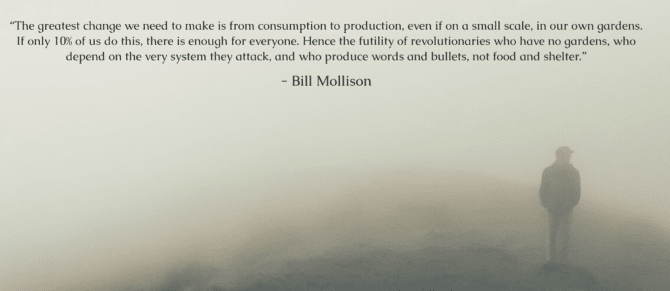
The other ‘reason’ or ‘purpose’ (‘meaning’ is better but not by much) for being up here on Raverloihenna Country is not only to steal a good solid day or so of additional writing on the new book, but also the find places to come back and finish it and others off. And so before heading off on today’s expedition, I threw some cards, as you do.

Starts with an actual book. Bit on the nose, but with cartomancy you usually want that. Ignore, as you always should, the ‘traditional meanings’ of the cards (although I note in passing this is literally a ‘secret handshake of the powerful’ card spread and I am surrounded by masons) and stay with ‘book’, ‘tower’ and ‘agreement’. The book and the tower are in agreement, have reached an accord to work together.
Then we get slightly lost looking for a place to turn around in Tangdimmaa and end up at a lighthouse where I took several of the above pics. So a tower. I had the iPad I was writing on in the truck at the foot of the lighthouse. Then we take another wrong turn (James has many skills but navigation is not one of them, owing to being quite gay) and end up in a seaside hamlet we both vibe with to such an extent we do the ultimate white people move of looking up house prices on our phones. (Spoiler: Nope. Not for another decade. Never.)
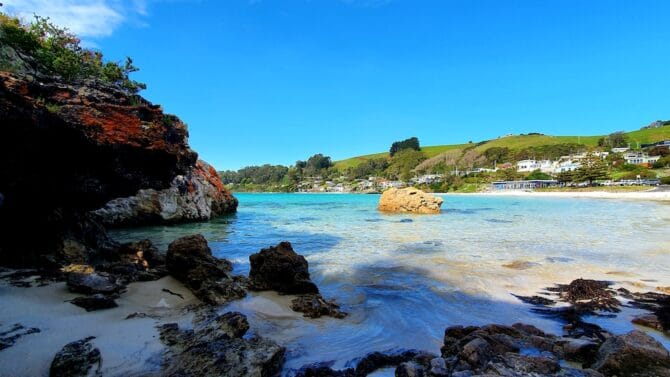
We did, however, find a bunch of holiday lets and broadly agreed to spend a week up here before Christmas so that I can continue working on the book and this can be our summer sun for the year, given that our deranged police state makes coming and going impossible at the moment. And we both agreed that it is somehow tied up with doing the full 15 hour Tangdimmaa walk. So that’s an agreement about a book that takes place under a tower. Not bad.
Returning to Innsmouth Stanley and the stacking of moments in place, there are more to stack.
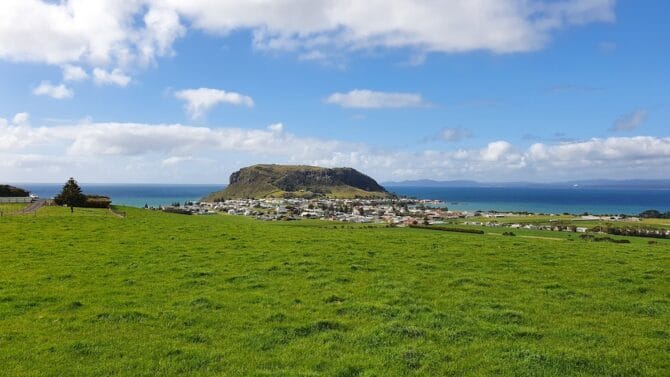
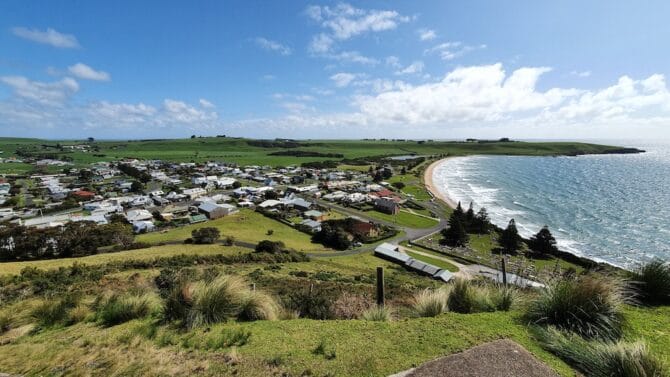
Facing off from Martula, across the town, high up on a windswept field, is the historic homestead of Highfield -another highly original name from our settlers. The first photo was taken from Highfield looking at Martula, and the second from Martula looking at Highfield.
Highfield served as the homebase for the Van Diemen’s Land Company from 1826, having been formed in London two years prior with royal permission to select ‘unexplored’ territories. So it’s Tasmania’s ground zero for that heady public-private partnership model that has been so historically impactful we should probably have a word for. Edward Curr, the house’s original occupant, is ‘rumoured’ to be principally responsible for the destruction of the local Native Tasmanians in a series of massacres on what he considered VDL Co land, then about 350,000 acres.

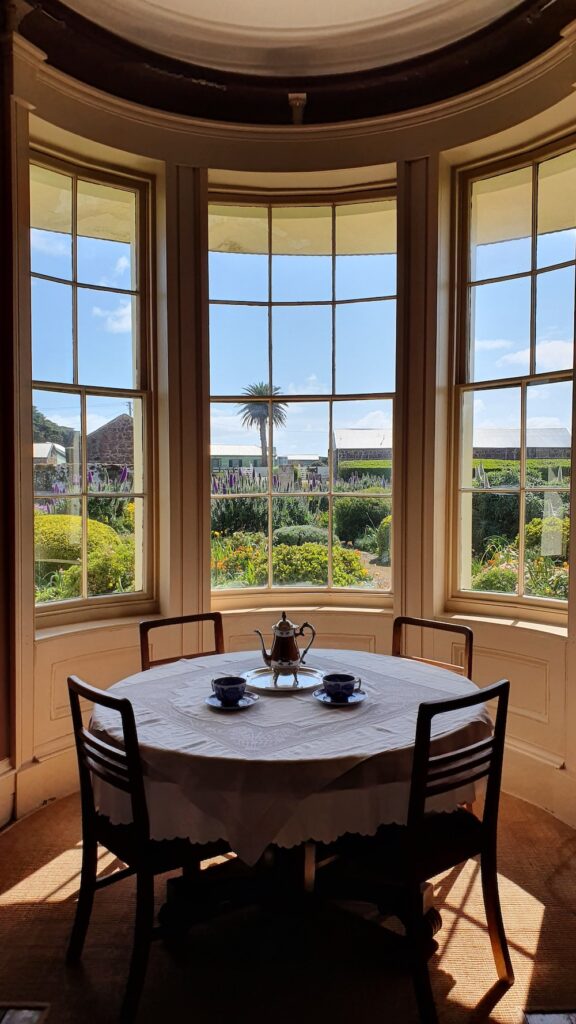
Part of the reason for visiting the caves around and in Tangdimmaa and Highfield is as will come to then end of the section on dwelling in the Custodianship course. The differences in thinking are stark, even somehow leaving aside one is a brutal invader and the other wasn’t. South Cave is protected from the elements, easy access to (as far as I can tell) continuous fresh water, mere metres from abundant food and infinite wood for fires. Highfield is atop a hill. For a bit of context Bass Strait and Cook Strait (in NZ) were deemed two of the most treacherous stretches of water in the empire. So ‘exposed to the elements’ is an understatement. The one guy who lives there permanently says you can hear the seals screaming on the wind. Charming.
It’s noteworthy also that after the land was cleared, the VDL Company’s original venture -merino wool- was a complete failure. (Eventually it became cattle and event today Cape Grim beef is among the best in the world.) So I’m not just talking about differing forms of dwelling, I’m talking about that situated in the wider context of custodianship. The Raverloihenna probably didn’t have too many failed animal ventures.
I don’t want to just make the cheap and obvious take that I would choose the indigenous dwelling because there are certainly other contexts around the world where that wouldn’t automatically or entirely be the case (I’m not living where there are lions or jaguars or whatever without actual walls, please) but in this instance the cave wins hands down. Highfield didn’t even have flushing toilets -just chamber pots- so it’s a more evenly run race than you might think.
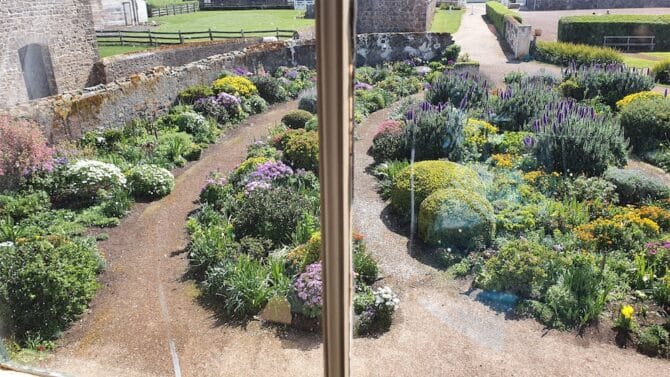
Anyway it is interesting that this area is where Bill Mollison incarnated. One of the things that excites me about permaculture today is the tension around how you learn from worldwide best practice in a contextually appropriate way. The decolonising needle is challenging and stimulating to thread. Bill Mollison was born where the empire set up opposition to a being of the Dreamtime and commenced eradicating the native population while changing -or seeking to change- how humans produce food. He grew up in the twin shadows of Highfield and Martula. That seems significant to me. Country selects its heroes.
These are my thoughts as we walk around the old house. Then I run into my desk.
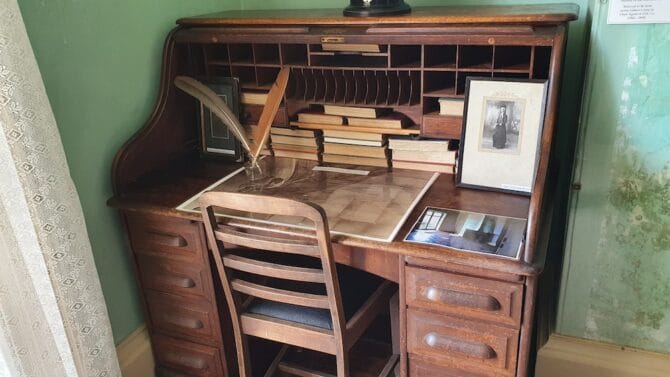
The drawers and dimensions are identical. Only the document slot configuration is slightly different. I send a pic to my mother. It was her desk before mine and her father’s before that. They have clearly been made in the same factory. For my next trick, without looking, I pull out the secret little side table I use for my mouse.

Yep.
Then on the mantle next to it is the drinks trolley I also inherited from my mother’s father.

This is strange even for people who do strange professionally. Because not only do I also have these two items, they are also on the same island. They came here. It’s not like my family is from the area and we both shop at the same ‘desk and drink trolley emporium’ on the high road as did the Fords. (The Fords were the next family at Highfield.)
So I start joking to myself that maybe I was Bruce Willis all along and I’m in fact haunting Highfield and only just realising it. Which has an extra layer of amusement because I was skyping Chris Knowles from the pub in Stanley yesterday afternoon about how this place is Innsmouth, describing all the old photos on the wall, and how, like the Overlook Hotel, I’m sure when someone in town dies they just sort of fade into view in one of the photos.
But I guess these are the sorts of things that happen when you engage with place with the awareness you exist in the context of a living universe. There’s a decidedly anti-linear mode to it. Being with the felt presence of the moment, noticing the feelings that arise. Once leaned into, once a certain confidence in that mode of thinking -the most important mode according to Bill Neidjie- life unfurls in front of you with the co-awareness that it is done intelligently -literally at the behest of intelligences. It was yesterday as I rounded the corner off the main street, walking along Martula’s base, I find Innsmouth’s Stanley’s Catholic church.
Yeah, that’s about right. That’s the church this place has and the church I find on this particular trip. Yet more intelligences and connections unfurl like ayahuasca’s iridescent coils in my imagination and I think back to another read on the cards, using ‘traditional’ meanings. The book in a Lenormand deck can indicate what is secret or hidden. And I think on my encounters at Highfield.
A secret in the old building leads to new connections.
I’ll take it.